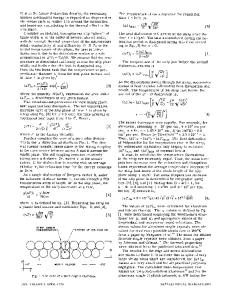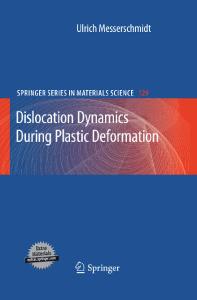Plastic Deformation of Rough Metallic Surfaces
- PDF / 1,179,596 Bytes
- 12 Pages / 595.276 x 790.866 pts Page_size
- 93 Downloads / 351 Views
ORIGINAL PAPER
Plastic Deformation of Rough Metallic Surfaces A. Tiwari1 · A. Almqvist2 · B. N. J. Persson1 Received: 21 June 2020 / Accepted: 31 October 2020 © The Author(s) 2020
Abstract The contact between rough metallic bodies almost always involves plastic flow in the area of real contact. We performed indentation experiments on sandblasted aluminum surfaces to explore the plastic deformation of asperities and modeled the contact mechanics using the boundary element method, combined with a simple numerical procedure to take into account the plastic flow. The theory can quantitatively describe the modification of the roughness by the plastic flow. Since the long-wavelength roughness determines the fluid leakage of metallic seals in most cases, we predict that the leakage can be estimated based on the elastoplastic contact mechanics model employed here. Keywords Plastic flow · Indentation · Penetration hardness · Persson contact mechanics · Boundary element method · Surface roughness
1 Introduction The contact between metallic bodies occur in many applications [1, 2], and often the contact pressure is so high as to generate plastic deformation, at least at the asperity level [2–12]. In fact, because of surface roughness and the high elastic modulus of most metals, the contact pressure between asperities at short length scale can be very high even when the nominal contact pressure is low. Thus for metals in the area of real contact some plastic flow will almost always occur, at least during the first contact [13]. Metallic seals are used in many applications involving very high fluid pressure differences, and in ultra high vacuum systems. Surface roughness and plastic flow highly affects leakage in metallic seals, since they are key factors in determining the surface separation in the non-contact area. For elastic solids like rubber, contact mechanics theories have been developed for how to predict the fluid leakage rate, and it has been shown that they are in good agreement * B. N. J. Persson b.persson@fz‑juelich.de http://www.multiscaleconsulting.com A. Tiwari http://www.multiscaleconsulting.com 1
PGI-1, FZ, Jülich, Germany
Machine Elements, Luleå University of Technology, 97187 Luleå, Sweden
2
with experiments [14, 15]. The simplest approach assumes that the whole fluid pressure difference between the inside and outside of the sealed region, occur over the most narrow constrictions (denoted critical junctions), encountered along the largest open percolating non-contact flow channels. For elastic solids numerical contact mechanics models [16], such as the boundary element model, and the analytic theory of Persson [17, 18], can be used to calculate the surface separation at the critical junction and hence predict fluid leakage rates. For solids involving plastic flow, the surfaces will approach each other more closely than if only elastic deformations would occur. This will reduce the fluid leakage rate [19, 20]. Here we will present the outcome of a study, where we experimentally explore the natur
Data Loading...











